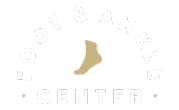What are some exercise recommendations for ankle sprain recovery?
Calf Stretches, Ankle Strengthening Exercises, Ankle Resistance Training
When recovering from an ankle sprain, it’s essential to engage in exercises that promote healing, restore mobility, and strengthen the ankle. Here are some exercises recommended for the recovery process of an ankle sprain:
1. Range of Motion Exercises: Perform gentle ankle movements to improve flexibility and reduce stiffness. This includes ankle circles, ankle pumps (moving the foot up and down), and alphabet exercises (drawing the alphabet with your toes).
2. Calf Stretches: Stretching the calf muscles can help alleviate tightness and improve ankle mobility. Stand facing a wall with one foot forward, keeping the back leg straight and the heel on the ground. Lean forward, feeling a stretch in the calf of the back leg. Repeat on the opposite side after holding for 30 seconds.
3. Ankle Strengthening Exercises: Gradually strengthen the muscles around the ankle to promote stability. Examples of exercises include heel raises (standing on the edge of a step and lifting the heels), ankle dorsiflexion (using a resistance band to pull the foot upward), and ankle eversion/inversion exercises (moving the foot inward and outward against resistance).
4. Balance and Proprioception Exercises: These exercises improve balance and proprioception, which is the body’s sense of its position in space. Try standing on one leg with the support of a stable surface and gradually progress to performing the exercise without support. Another option is using a balance board or wobble cushion to challenge your balance.
5. Ankle Resistance Training: Incorporate resistance training exercises to strengthen the ankle further. This can involve using resistance bands or ankle weights for exercises like resisted ankle plantar flexion (pointing the foot downward) and resisted ankle inversion/eversion exercises.
It’s important to start these exercises gradually and listen to your body. If you experience pain or discomfort during any exercise, modify or discontinue it. It’s recommended to consult with a healthcare professional or physical therapist for an individualized exercise plan based on your specific condition and recovery stage. They can provide proper guidance and monitor your progress to ensure a safe and effective recovery.
Ankle-circles, Alphabet Writings Exercises
Recovering from a sprained ankle requires time, patience, and appropriate care to ensure proper healing and prevent further injury. Here are some steps and recommendations for an effective recovery:
● Rest: It is crucial to give your ankle ample rest immediately after the sprain. Avoid putting weight on the injured ankle and limit activities that may aggravate the injury. Use crutches if necessary to offload weight from the ankle.
● Ice: Apply ice to the affected area for 15 to 20 minutes every two to three hours during the first 48 to 72 hours after the injury. Ice helps reduce swelling and inflammation. Remember to wrap the ice pack in a thin cloth to avoid direct contact with the skin.
● Compression: Use an elastic compression bandage to wrap the ankle gently. Compression helps reduce swelling and provides stability to the joint. Ensure that the bandage is snug but not too tight to impede blood circulation.
● Elevation: Elevate your ankle above heart level whenever possible. This position helps reduce swelling by allowing fluids to drain away from the injured area.
● Pain management: Ibuprofen and acetaminophen, two over-the-counter painkillers, can help control pain and lessen inflammation. Follow the recommended dosage and consult a healthcare professional if you have any concerns or underlying medical conditions.
● Gentle exercises: Once the acute phase has passed and the pain has subsided, begin gentle ankle exercises to promote mobility and strength. Range-of-motion exercises, such as ankle circles or alphabet writing with your foot, can be beneficial. Gradually progress to more challenging exercises as your ankle heals.
● Physical therapy: If your sprained ankle is severe or not improving as expected, consider seeking help from a physical therapist. They can guide you through appropriate exercises and techniques to enhance your recovery, restore strength, and improve stability.
● Supportive footwear: Choose supportive shoes with good cushioning and ankle stability as you resume walking and physical activities. Avoid high heels or shoes that may strain your ankle.
● Gradual return to activities: Once your ankle has healed sufficiently, gradually reintroduce activities that involve more strenuous movements or sports. Start with low-impact exercises and gradually increase the intensity over time. Listen to your body and do not push through pain.
● Strengthening: To strengthen an ankle after a sprain, incorporate a range of exercises and techniques. Begin with range-of-motion exercises like ankle circles and pumps, and progress to resistance band exercises for added resistance. Calf raises, balance exercises, such as single-leg balance and standing on unstable surfaces, and the ankle alphabet exercise can improve stability. Incorporate single-leg squats and plyometric exercises like jumping and hopping once ankle strength improves.
Band Eversion, Balance Work, Towel Scrunches
After an ankle sprain, it’s important to keep moving while allowing those tissues to heal. Starting out with simple ankle pumps can help reduce swelling and keep the ankle moving. Most often ankle sprains occur and impact the outside of the ankle so strengthening the outside of the calf is important to help support those ligaments that have been injured or stretched.
After regaining the range of motion with things like calf stretching or drawing the alphabet with your foot, doing things like banded eversions, balance work, towel scrunches, and calf raises can help strengthen the foot and ankle. It’s also important to consider how the hip impacts the ankle, so sometimes even including some side of the hip strengthening can be helpful. The progression time can vary due to the severity of the sprain, so proper guidance by a medical professional such as a physical therapist or physio can be helpful.
Plyometric Training
1. Ankle Strengthening Exercises. Doing strengthening exercises for the muscles around your ankle can help to support it and reduce future injury risk. Examples of these types of exercises include calf raises, single-leg heel raises, lateral mini-band walks (sideways stepping while wearing a resistance band), and balance drills. That incorporates standing on one foot with eyes closed or balancing on an uneven surface like a wobble board.
2. Range of motion (ROM) Exercise. After any type of strain or strain, you must first regain range of motion before doing other more intense activities such as running or jumping sports drills. ROM exercise is important because it helps maintain flexibility in your joints so they can move through their full range without pain and discomfort which will also improve function throughout everyday life tasks such as walking up stairs or inclines.
To do this kind of mobility work you should focus on dynamic stretching techniques incorporating gentle movements that will aid muscle lengthening rather than static stretches. Static stretches are typically held for longer periods of time resulting in increased tightness after the stretch has been released due to neurological responses from our body’s central nervous system.
3. PlyometricTraining. Plyometrics involves explosive movements done at high intensity and is great for helping to strengthen muscles, ligaments, and tendons. Examples of this type of exercise would be jumping exercises such as box jumps or tuck jumps which can help increase muscle power in the ankle area while also working on balance at the same time.
It is important when doing plyometric activities to make sure you have a good base level of strength first, before progressing onto more intense drills that require higher levels of coordination, speed plus agility as these activities can be quite demanding on the body.
This is a crowdsourced article. Contributors' statements do not necessarily reflect the opinion of this website, other people, businesses, or other contributors.




